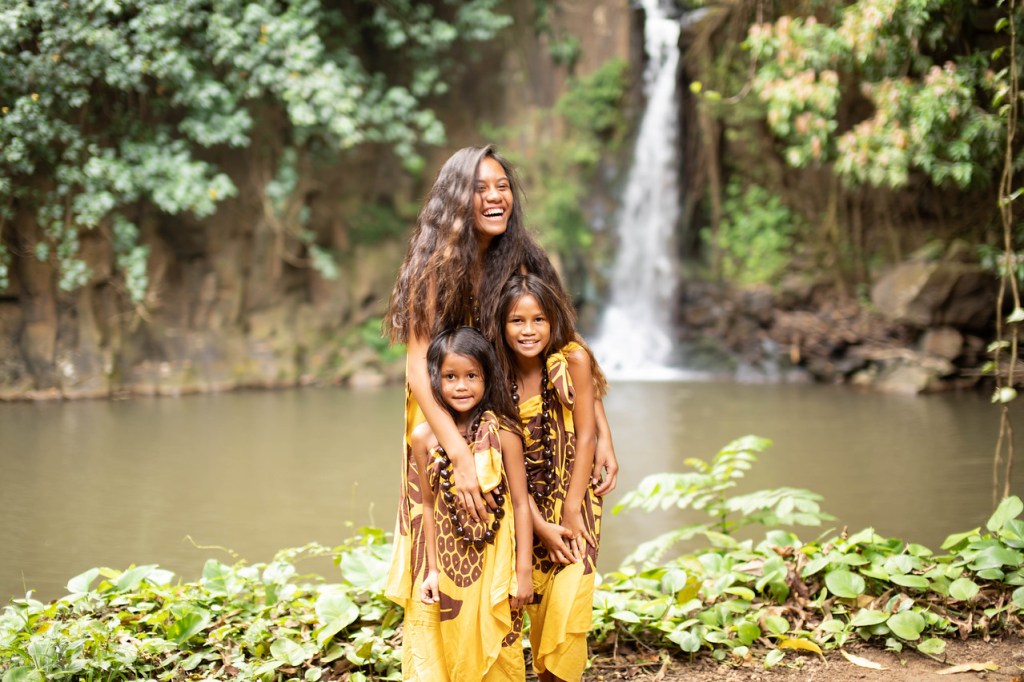Makahiki Season
A time of rest, recovery & connection

As we enter the winter months in Hawaiʻi, we welcome a special season…the beginning of the Hawaiian new year! As we enjoy beautiful weather year-round there are still small signs of the changing of seasons. Plumeria and rainbow shower trees begin to shed their blooms, the surf picks up, and Hawaiians welcome the fall months by looking to the stars.
Typically in October or early November, the appearance of the Makali’i star cluster can be found in the eastern night sky after sunset. Also referred to as Pleiades, or “Seven Sisters,” the appearance of this particular star cluster marks the beginning of Makahiki season. Another physical sign of Makahiki is the return of koholā or humpback whales to Hawaiʻi’s waters. Makahiki season lasts for several months, and offers a much needed (and at one time enforced) time of rest. Taking a step back from work and redirecting energy into the home lies at the heart of Makahiki season.
ANCIENT HAWAIʻI – HONORING LONO AND THE SEASON OF REST
The appearance of the star cluster goes hand-in-hand with the presence of Lono, the Hawaiian god of agriculture. In early times, Makahiki season was distinctly tied to the time between harvests. October to February became a critical time to plan for the new year by taking time to prepare physically and mentally. During Makahiki, there is a shift from Kū (the god of war) to Lono, and work was at one time actually forbidden during the 4-5 month break. The season of rest was intended for both the people and the ‘āina to recover from the previous harvest. Fishermen would cease to fish and allow the sealife to replenish, and Hawaiian families would connect with each other through traditional games to pass the time.

CELEBRATION, CEREMONY, AND CONNECTION
To celebrate the arrival of Lono, Hawaiians would gather in prayer and at family gatherings packed with local dishes and games to honor Lono’s travels. During Makahiki, Lono is said to be traveling to each of the islands, so the celebrations were to honor his yearly visit. Prior to the appearance of the star cluster and “arrival of Lono,” the community would collect hoʻokupu, or offerings for Lono. Some popular offerings included fish, leis, home-grown produce and other items created by the hand of the Hawaiian people.
Hi‘u-Wai (water splashing) was a common ceremony to mark the beginning of the season. The ceremony took four to five days to complete, and included ceremonial bathing in the Pacific and dressing in new clothes as the fresh start to a new year.
SETTLERS TO HAWAIʻI AND THE SEASON OF PEACE
When Captain James Cook arrived on the islands, it was ironically during Makahiki season. Of course, he did not know this, but the Hawaiians were convinced that the captain was sent by Lono, and therefore welcomed Cook and his crew with aloha, gifts, and Hawaiian hospitality. When Cook returned, the native Hawaiians began to feel taken advantage of, resulting in a strain on their relationship with the newcomers. With Makahiki season over, the groups clashed resulting in the death of a Hawaiian chief, Captain Cook, and many others. In retrospect, the relationship between the natives and settlers could have potentially gone sour more quickly had they not arrived during Makahiki’s season of peace.
As mentioned before, the return of the koholā plays an important symbolic role in Makahiki season. They come to give birth to their young during the fall and winter months, as the warmer waters provide a safer environment during a vulnerable time. Nature mirrors Hawaiian tradition as the whales are more protected from predators when their young are born, and man is safe from war or conflict during the time of peace.

MAKAHIKI SEASON NOW
Modern celebrations of Makahiki are not too different from ancient times. Luaus, family get-togethers, traditional food and games are still shared to celebrate the special season. Of course, over the years traditional food has changed, as the melting pot of Hawaiʻi has expanded to include other cultures. Filipino, Portuguese and Japanese dishes among others now join traditional Hawaiian dishes at the Makahiki table.
Makahiki festivals are hosted throughout the islands to honor cultural traditions, dance, and music, and the cornerstones of Makahiki remain the same. Taking the focus off of work, politics, and material things, and redirecting inwards lies at the heart of the season. The goal is to strive for personal excellence, improve pilina (relationships,) give the ʻāina time to recover, and honor the spirit of aloha.
THE GAMES
Now, the most fun part of Makahiki…the games! The friendly competition integrates ancient Hawaiian games – no frills, all fun! Here are a two favorites still played today during Makahiki season:
Haka Moa – The one-legged chicken fight
This is exactly how it sounds. Participants enter a circle on the grass and hold one leg while also holding their opponent’s arm. Whoever wrestles their opponent out of the circle first wins!
Kōnane – Hawaiian checkers
Kōnane is a less high-energy game and often played in the evenings once the outdoor games and celebrations have concluded for the day. It is a game of strategy and patience, traditionally played on a stone or wooden board called papamū.
